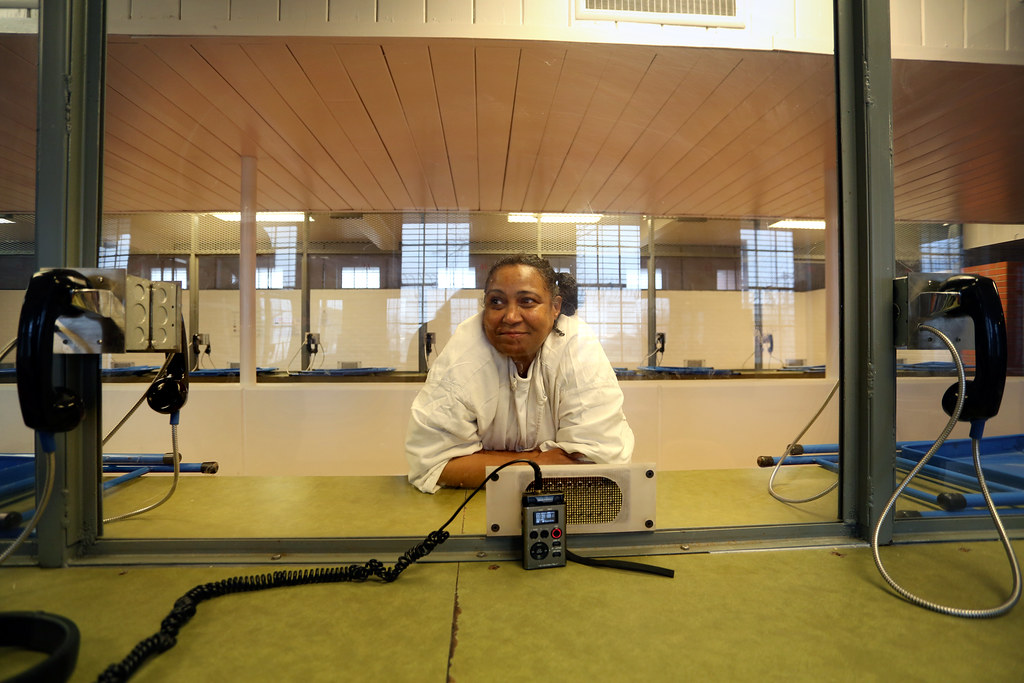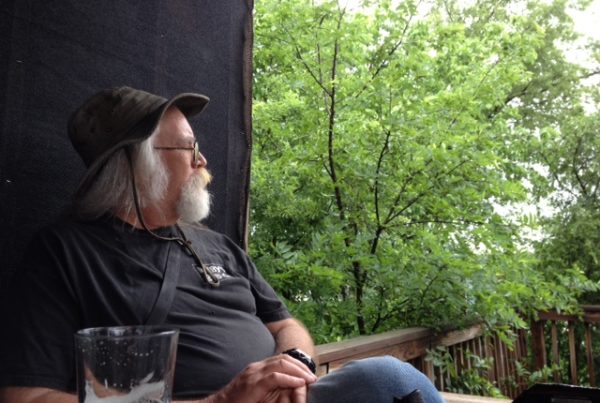Texas news outlets often report on death penalty stories, given that the state leads the nation in prisoner executions. But rarely do reports tell the stories of women on death row. Those women are housed in a prison in Gatesville, and as I wait for the guards to bring over inmate Linda Carty, I notice the room is very different from the crammed spaces where I’ve interviewed men on death row. There’s still glass separating us, but this room is spacious and well-lit.
Carty has been on death row for 17 years. In 2001, she and three men invaded 25-year-old Joana Rodriguez’s Houston home. They were convicted of kidnapping Rodriguez’s three-day old baby and leaving Rodriguez tied in a trunk where she died.
For her crimes, Carty was sentenced to death – a sentence that’s rare for women. You can count those women on death row in Texas with your fingers: Carty is one of six. By contrast, there’s more than 200 men in Texas who are awaiting execution.
That’s the first of five reasons you’ll rarely hear about the women on death row: there’s very few of them.
Reason No. 2 is closely related to reason No. 1.
“Of the close to 1,500 executions in the United States since the 1970s, only 16 have been women,” says Robert Dunham of the Death Penalty Information Center in Washington.
He says since fewer women are executed, there are fewer headlines about them. The last time Texas executed a woman was five years ago.
Now for reason No. 3: Women on death row are treated differently than men. Their living conditions are less stringent. Linda Carty, for instance, has a job.
“We get to work four hours, and then we have two hours for rec: Tuesday/Thursday we get outside for two hours. Then, Monday, Wednesday, Friday, Saturday, Sunday you are allowed to watch TV for two hours,” Carty says.
But life on death row has its limitations. One is the phone: Carty is only allowed four phone calls a year, five minutes each. And guards carefully watch her every move. Then, there’s the death sentence itself.
“A death sentence is basically, how should I put it – it’s an onus that no one should have to live with; it’s added stress. It’s like an albatross you carry around – that burden to worry about,” Carty says.
Houston Attorney Wallis Nader specializes in prisoner’s rights. She says while stress is a challenge for all on death row, the men live in de facto isolation.
“That’s a difference that should not exist,” Nader says.
They don’t have the same freedom of movement as women, and are not allowed to have jobs. Their recreation also takes place in a cell, one hour a day.
“They are placed in an outside cage that is relatively small, and is often covered in bird feces,” Nader says. “[It] tends to be not very different from the cell they were in before going to the recreation chamber.”
Nader and other attorneys have challenged the conditions the men face because they believe some are unconstitutional. The news media often cover those challenges, so that’s another reason why we hear more about the men.
Reason No. 4: Robert Dunham with the Death Penalty Information Center says it’s the types of crimes women commit that tend to be different than those committed by men.
“Women are more likely to have committed an act of domestic violence – an act that prosecutors would describe as a ‘crime of passion,’ so it’s less likely that you’d have a woman who is prosecuted for premeditated murder,” Dunham says.
Even though the crimes are different, Dunham has noticed that women get a lot of attention before they’re sentenced, especially when the victims are children.
Lastly, reason No. 5 for the difference between the coverage of women and men on death row is that many women actually try to keep their stories out of the news, Dunham says. But he says that’s sometimes to their detriment. When Dunham was an attorney, he suspected some of his female clients were living with mental health issues, or had experienced trauma, abuse or neglect by others. He often thought that by them sharing their experiences with the news media, that could help “humanize” them when they faced a jury.
“Juries think it’s necessary to kill monsters, but they really, really don’t want to kill people,” Dunham says.
But the women often asked their attorneys not to bring up their past traumas. Dunham says their stance was, “I would rather be dead, than be revictimized.”
They didn’t want to feel exposed in front of their loved ones, or ridiculed.
Death row inmate Linda Carty says her outcome would’ve been different had she told her whole story. Now, after 17 years, she’s not worried about being ridiculed or exposed, and has asked an attorney to look into her case.
“If I didn’t know what I have, I probably would be worried. But I do know what we have,” Carty says.
What she has is the hope of a new trial, and if she were to get it that would be at least one time the public would hear about a woman on death row before her death.
















